Resurrecting Countervailing Power (Why American capitalism is so rotten, Part 9)
What we must do
Friends,
Welcome back to our Friday series exploring why it’s become so difficult to achieve the common good under modern American capitalism.
As we’ve seen, the real challenge is political rather than economic. It’s impossible to reform our economic system without altering the allocation of political power that prevents such reform.
Today I’ll suggest how to do that — and examine what happened to the countervailing powers that once offset the powers of giant corporations and Wall Street and created room for such reform.
1. Summary of where we’ve been so far in this series
As we’ve seen, for the first three decades after the Second World War, America built the largest middle class the world had ever seen — and the most buoyant democracy.
The arrangement was far from perfect, but with the addition of civil rights and voting rights, subsidized health care (Medicare and Medicaid), and a huge expansion of public education, democracy was on the way to making capitalism work for the vast majority.
Then came a giant U-turn, largely courtesy of Ronald Reagan. Deregulation, privatization, globalization, and the unleashing of finance created the Full Monty: abandoned factories and communities, stagnant wages, widening inequality, a shrinking middle class, political corruption, and shredded social support.
The result has been widespread anger and cynicism. Most people are working harder than ever but can’t get ahead, and their children’s prospects aren’t any better. The typical American family is living from paycheck to paycheck, and more than one out of every six American children is impoverished. At the same time, a record share of national wealth has surged to the top.
Donald Trump represents the fusion of oligarchic power with white Christian nationalism — a treacherous combination that marks the failure of progressive politics.
When the people are no longer defended against the powerful, they look elsewhere.
2. When countervailing power worked
After World War II, political scientists sought to explain the relative stability and responsiveness of American democracy compared to other nations that succumbed to communism or fascism.
They hypothesized that even though the voices of individual Americans counted for little, most people belonged to a variety of interest groups and membership organizations — clubs, associations, political parties, and trade unions. “Interest-group pluralism,” as they called it, was responsive to the needs and aspirations of most citizens.
Beginning with the New Deal and extending through the first three decades after World War II, the federal government created centers of economic power that offset the power of the giant corporations and Wall Street.
Unions pushed for and won legislation in 1935 that legitimized collective bargaining, and then, in subsequent decades, built economic and political strength on that foundation.
Unorganized workers gained economic power in the form of minimum wage legislation.
Small farmers got federal price supports, as well as a voice in setting agricultural policy. Farm cooperatives, like unions, won exemption from federal antitrust laws.
Small retailers were protected against retail chains through state “fair trade” laws requiring wholesalers to charge all retailers the same price and preventing chains from undercutting prices. At the same time, the retail chains were allowed to combine into national organizations to counter the significant market power of large manufacturers.
Small investors gained protection under the Securities and Exchange Acts against the power of big investors and top corporate executives.
Small banks were protected against Wall Street by regulations that barred interstate banking and separated commercial from investment banking.
And so it went, across the economy.
My friend and mentor Ken Galbraith approvingly dubbed all this “countervailing power.” As he wrote in his 1952 bestseller, American Capitalism: The Concept of Countervailing Power, “the support of countervailing power has become in the last two decades perhaps the major peacetime function of the federal government.”
Countervailing power across the economy created a counterweight to the centralized power of big corporations and Wall Street. “Given the existence of private market power in the economy,” Galbraith continued, “the growth of countervailing power strengthens the capacity of the economy for autonomous self-regulation and thereby lessens the amount of over-all government control or planning that is required or sought.”
These centers of countervailing power ensured that America’s large middle and working classes received a significant share of the gains from economic growth.
3. The breakdown of countervailing power
Starting in the 1980s, however, this profoundly changed. It wasn’t just that big corporations, Wall Street, and wealthy individuals became more politically potent — as I’ve shown in this series.
It was also that the centers of countervailing power started to wither.
Because wages stagnated, most people had to devote more time to work in order to makes ends meet. As sociologist Robert Putnam has documented, Americans stopped being a nation of “joiners.” By the 1980s, the expansive mosaic of local organizations that had given meaning to American pluralism was being replaced by national advocacy organizations headquartered in Washington.
“Membership” no longer meant activism at the local and state levels. It meant sending money in response to mass solicitations.
Unions continued to lobby and make campaign contributions, but their political and economic clout waned, especially when compared to that of big corporations, trade associations, Wall Street, and wealthy individuals.
In the 2012 elections, the Koch brothers’ political network alone spent more than double on politics than the 10 largest labor unions put together. Corporations spent $56 on lobbying for every $1 spent by labor unions.
The loss of American workers’ collective economic power compounded their loss of political power, which in turn accelerated their loss of economic power.
Many small retailers went under due to repeals of state “fair trade” laws and court decisions finding that resale price maintenance violated antitrust laws. Large chains that spearheaded such moves argued that consumers would get better deals as a result. But the moves also opened the way to giant big-box retailers, such as Walmart, that siphoned away so much business from the Main Streets of America that many became ghost towns.
These changes also led to the closings of millions of locally owned businesses that had provided communities with diverse products and services, some produced locally or regionally, and many jobs.
The deregulation of finance — demanded by Wall Street — allowed the Street’s biggest banks to become far bigger, taking over markets that state and local banks had previously served and thereby cutting off financing for many small local and regional enterprises.
Private equity and hedge funds bought up local newspapers and gutted them for fast profits. Half of all daily newspapers in the U.S. are now controlled by financial firms.
4. The Democratic Party’s Faustian bargain
The decline of these sources of countervailing economic power paralleled a decline in countervailing political power.
The Republican Party was already attuned to the preferences of large corporations, Wall Street, and other wealthy patrons.
The Democratic Party became almost as responsive to these same moneyed interests. “Business has to deal with us whether they like it or not, because we’re the majority,” crowed Democratic Representative Tony Coelho, who, as head of the Democratic Congressional Campaign Committee in the 1980s commenced a shakedown of corporate America.
Coelho’s Democrats achieved a rough parity with Republicans in contributions from corporate and Wall Street, but it proved a Faustian bargain.
In the 1990s, Democrats voted against Bill Clinton’s health care plan because their corporate sponsors opposed it.
In his first two years in office, Clinton pushed for two items of central importance to big business. He got Congress to enact the North American Free Trade Agreement, followed by the establishment of the World Trade Organization. And he committed to reducing the federal budget deficit.
Clinton and his allies in Congress also deregulated Wall Street. In 1993, Democrats supported the Interstate Banking and Branching Efficiency Act, which ended restrictions on interstate banking. In 1999, Clinton pushed for repeal of the 1933 Glass-Steagall Act that had separated commercial from investment banking. In 2000, he supported the Commodity Futures Modernization Act, which prevented the Commodity Futures Trading Commission from regulating most over-the-counter derivative contracts, including credit default swaps.
Eight years later, Barack Obama presided over one of the most pro-business administrations in American history. He pumped hundreds of billions of dollars into Wall Street in order to save the Street (and the U.S. economy) from imploding after the crash of 2008. And Obama enacted a broad-based health care law — which Americans needed, but which also enriched insurance and pharmaceutical companies. Under Obama’s watch, the stock market made up for all the losses it had suffered in the Great Recession and reached new record highs.
The career paths of Democratic officials in the Clinton and Obama administrations confirmed their close ties to business and Wall Street.
Clinton’s treasury secretary, Robert Rubin, who chaired Goldman Sachs before going to Washington, upon leaving became chair of the executive committee of Citigroup. Tim Geithner, Obama’s treasury secretary, returned to Wall Street as president of the private-equity firm Warburg Pincus. Jack Lew, who replaced Geithner as treasury secretary, had been chief operating officer of Citigroup’s Alternative Investments unit, a proprietary trading group, before joining the Obama administration. Peter Orszag, Obama’s director of the Office of Management and Budget, left the administration to become Citigroup’s vice chairman of corporate and investment banking and chairman of the financial strategy and solutions group.
Was it coincidental, then, that the Obama administration never put tough conditions on banks receiving bailout money, never prosecuted a single top Wall Street executive for the excesses that led to the near meltdown, and even refused to support a small tax on financial transactions that would have generated tens of billions of dollars in annual revenues and discourage program trading?
5. The birth of modern American populism
Even prior to Trump, the trend was unmistakable.
In 1964, just 29 percent of voters believed that government was “run by a few big interests looking out for themselves.” By 2013 — after the Wall Street bailout — 79 percent of Americans believed it.
In 2006, 59 percent of Americans felt that government corruption was widespread. By 2013, 79 percent of Americans felt that way.
Even before Trump, most Americans disdained politics and politicians and had become cynical about the possibilities for meaningful political change.
The 2016 presidential election was a perfect storm: a record concentration of income and wealth at the top. Unprecedented amounts of campaign spending and influence peddling by corporations, Wall Street, and wealthy individuals, much of it in secret. Deep cynicism about government among the electorate. And countervailing power all but gone.
6. The real choice: which populism?
We are now in a populist era. The major fault line in American politics has shifted from Democrats versus Republicans to anti-establishment versus establishment.
The strongest and most powerful force in American politics is a rejection of the status quo, a repudiation of politics as usual, and a deep and profound distrust of elites — including the current power structure of America. Antipathy toward Wall Street and large corporations is at record levels.
But the new American populism takes two distinct forms. One is authoritarian, as exemplified by Trump. The other is progressive, as best exemplified, most recently, by Bernie Sanders’s 2016 Democratic primary.
Trump is a fake populist, of course. Many big corporations and wealthy individuals are solidly behind him. After they bankrolled his 2016 election, he rewarded them with a giant tax cut. The same pattern is being repeated today.
The public face of Trump’s authoritarian populism is based on lies, bigotry, paranoia, and retribution.
“In 2016, I declared I am your voice,” Trump said in a speech at the 2023 Conservative Political Action Conference and repeated a few weeks later at his first 2024 campaign rally in Waco, Texas. “Today, I add: I am your warrior. I am your justice. And for those who have been wronged and betrayed, I am your retribution.”
Trump’s 2024 campaign has nothing to do with conservative orthodoxy emphasizing small government. To the contrary, Trump is proposing to centralize government power under his authority and extend it over a range of issues now outside the scope of federal control.
Other Republicans have also been eager to sound populist. We “cannot be the party of fat cats, rich people, and Wall Street,” said Republican Senator Rand Paul. Republican Senator Ted Cruz accuses the “rich and powerful, those who walk the corridors of power” of “getting fat and happy.”
The sincerity behind these statements might be questioned, but sincerity is not the point. Such statements are uttered because those who make them know they will be received enthusiastically by the voters they are courting.
Robert F. Kennedy Jr. has also embraced authoritarian populism. An environmental lawyer, Kennedy has spent the past two decades repeatedly making disproven arguments about a link between vaccines and autism. He became a vocal critic of almost every government-funded or endorsed approach to mitigating COVID.
At some point, hopefully, the followers of Trump, Cruz, Kennedy, and other authoritarian populists will discover they’ve been hoodwinked.
Even in its authentic form, authoritarian populism is dangerous, because it leads to fascism. It rejects science. It promotes nativist bigotry. It generates paranoia and conjures conspiracies where there are none. It creates leadership cults. It rejects democracy.
The only way back toward a democracy and economy that promote the common good is for the majority of us to establish a new countervailing power based on progressive populism. The moneyed interests will continue to do what they do best: make money. The rest of us must do what we do best — use our voices, our vigor, and our votes to wrest back economic and political control.
7. What would progressive populism look like?
Progressive populism has not been a dominant force in the Democratic Party since Franklin D. Roosevelt.
Joe Biden is as close to a progressive populist as we have come in the last half-century — reviving American manufacturing, boldly enforcing anti-monopoly laws against giant corporations, and protecting workers’ rights to unionize.
But Biden has not taken direct aim at the growing political power of giant corporations, Wall Street, and the ultra-wealthy. He has not explained how they have abused their wealth and power to alter the economy to their advantage — and the disadvantage of most other Americans. He has not named names. He has not fought to get big money out of politics.
Yet polls show strong public support for getting big money out of politics. For cutting the biggest Wall Street banks down to a size where they are no longer too big to fail. For resurrecting the Glass-Steagall Act, which had separated commercial and investment banking until its repeal in 1999.
For ending “corporate welfare,” including subsidies to Big Oil, Big Pharma, Big Agribusiness, Wall Street, and the Export-Import Bank.
For strengthening labor unions.
It’s not enough for Biden and the Democrats to be “against Trump.” They also need to fight for a bold vision of what the nation could achieve for average working people — including a federal jobs guarantee, Medicare for all, free public higher education, access to child care and elder care, a universal basic income, and affordable housing — all financed by a progressive tax on wealth.
In addition, expanded Social Security, financed by raising the cap on income subject to Social Security taxes.
A federal guarantee of a woman’s freedom to choose abortion.
And electoral reforms that get big money out of politics and expand the right to vote.
Winning such a fight would necessitate a strong coalition — trade unions, working men and women, local political organizations, small businesses, young people, and others. In other words, a new countervailing power.
The Democratic Party must change from being a giant fundraising machine to a movement. It needs to unite the poor, working and middle class, people of color and white people — everyone who has barely had a raise in 30 years and who now feels cynical, powerless, and disenfranchised.
The life of the party — its enthusiasm, passion, youth, principles, and ideals — was elicited by Bernie Sanders’s 2016 campaign. This isn’t to denigrate what Hillary Clinton accomplished in 2016 or what Joe Biden did in 2020. It’s only to recognize what all of us witnessed: the huge outpouring of excitement that Bernie’s campaign inspired, especially from younger people.
This is the future of the Democratic Party. It is the future of progressive populism.
This is feasible. Remember that starting in July 2021, 36 million American families began receiving pandemic payments of up to $3,000 per child ($3,600 for each child under six).
The result? Child poverty dropped by at least a third, and the typical family gained some breathing space.
This hugely successful experiment ended abruptly in December 2021 when Senator Joe Manchin joined 50 Republican senators in rejecting President Biden’s Build Back Better Act, which would have continued it.
They cited concerns over the experiment’s cost — an estimated $100 billion per year, or $1.6 trillion over 10 years. But that’s less than big corporations and the rich will have saved on taxes from the Trump Republican tax cut of 2018. Repeal it, and there would be enough money. The cost is also less than the increase in the wealth of America’s 745 billionaires during the pandemic. Why not a wealth tax?
The experiment died because, put simply, the oligarchy didn’t want to pay for it.
Capitalism is consistent with democracy when democracy is in the driver’s seat — reducing the inequalities, insecurities, joblessness, and poverty that accompany unbridled profit-seeking.
We must put democracy back in the driver’s seat, where it was most of the time between 1933 and 1980.
Next week I’ll conclude this 10-week series with some thoughts on the future of capitalism and the common good.
Again, I want to thank you for joining me. I urge you to add your comments, take part in our discussion, and share with others.
Also, if you are able, please consider a paid or gift subscription. Subscribers to this newsletter keep it going.

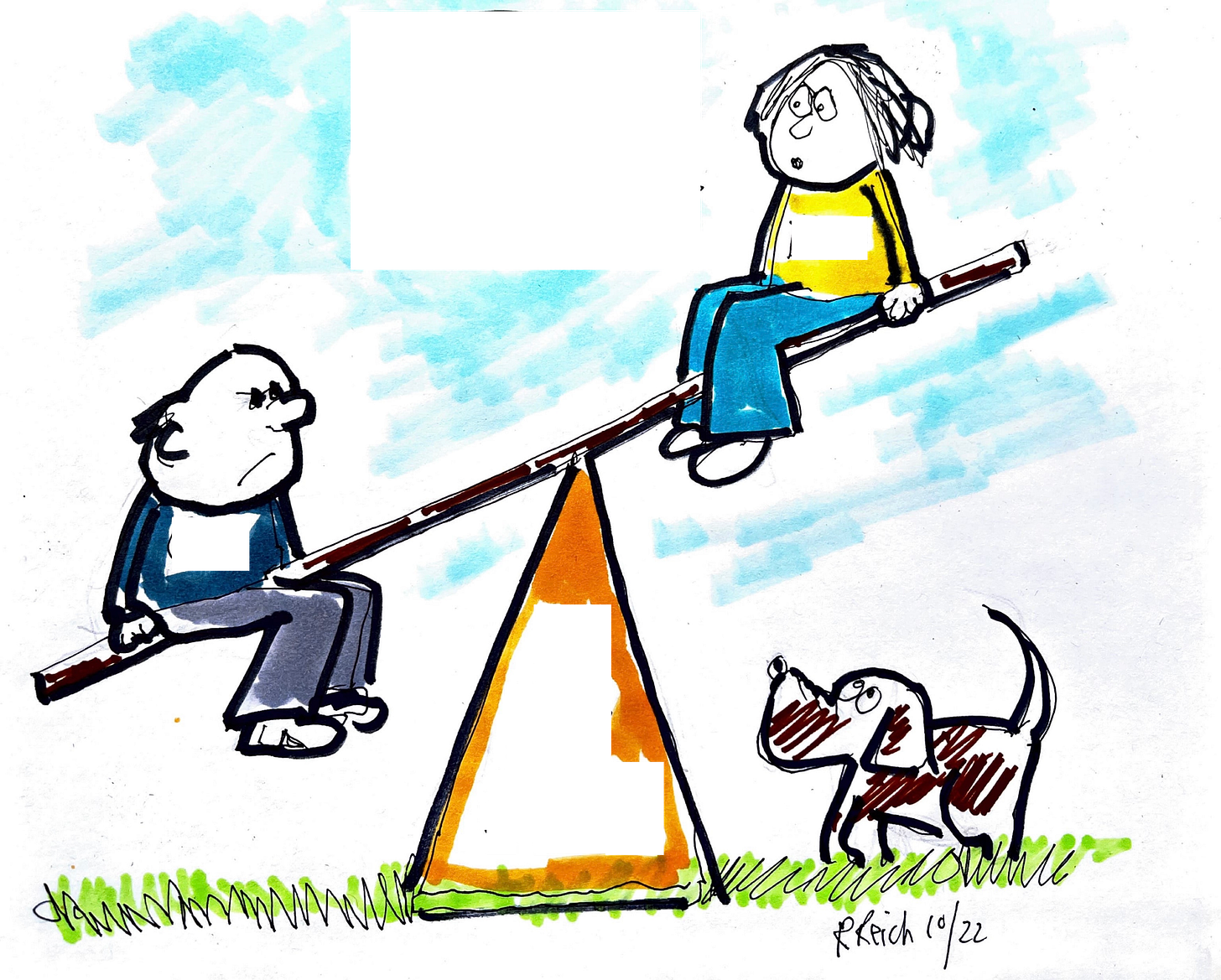
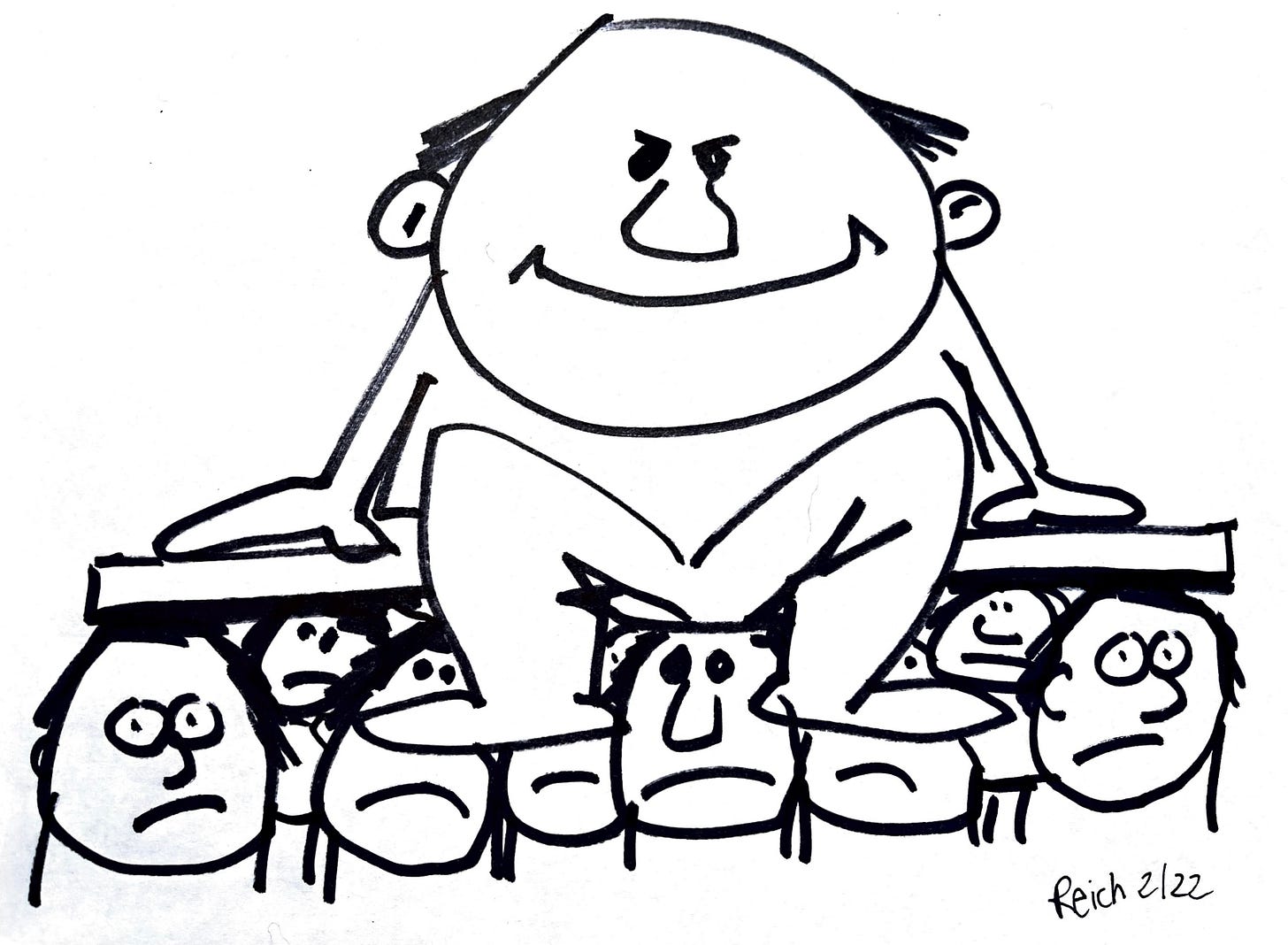
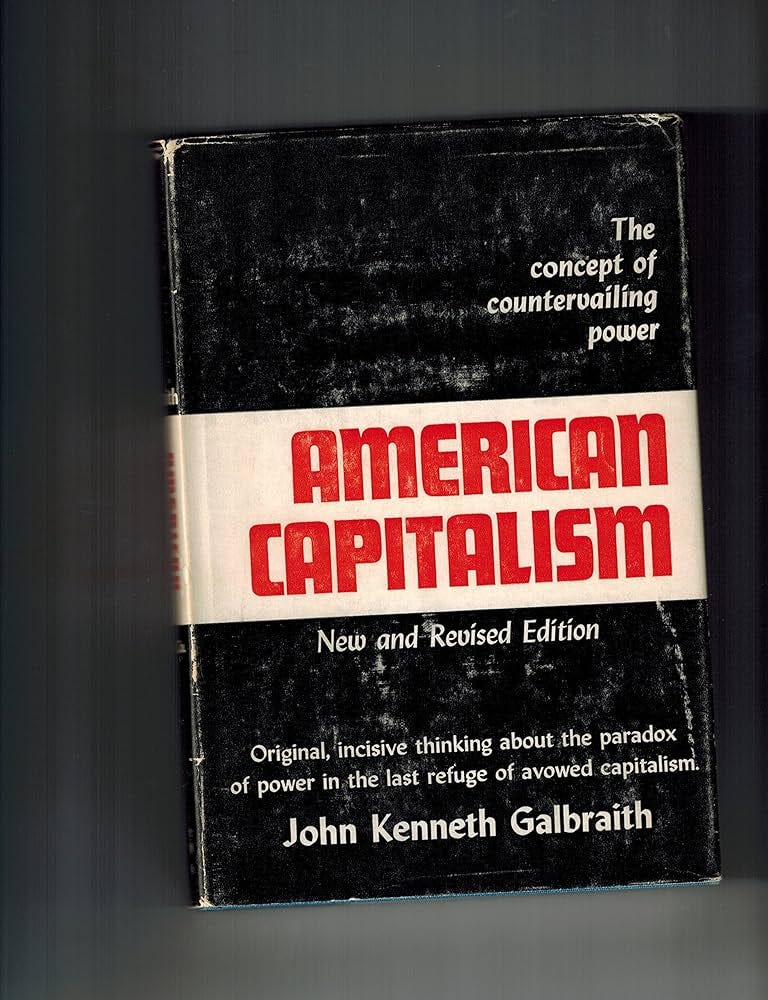
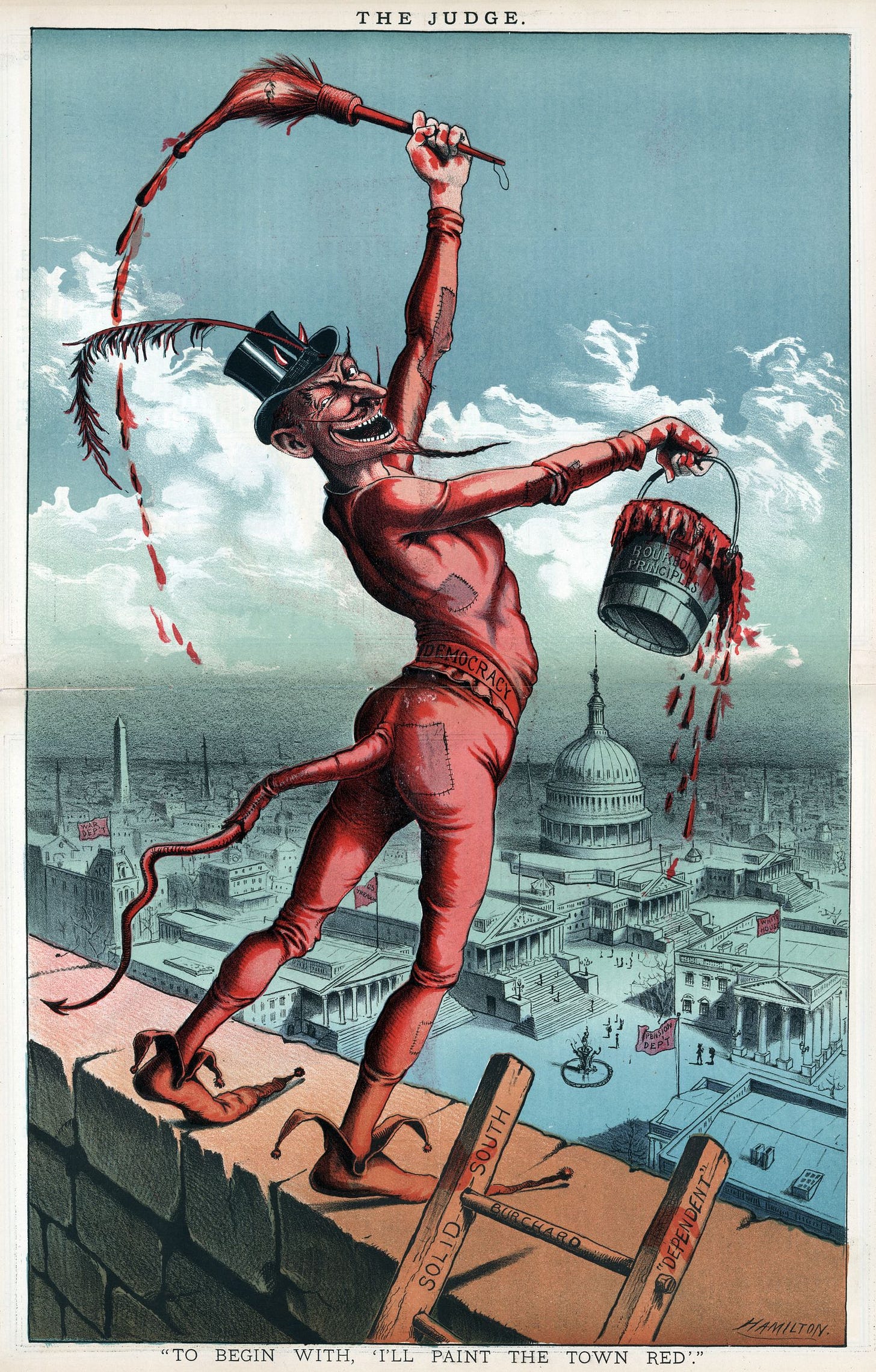
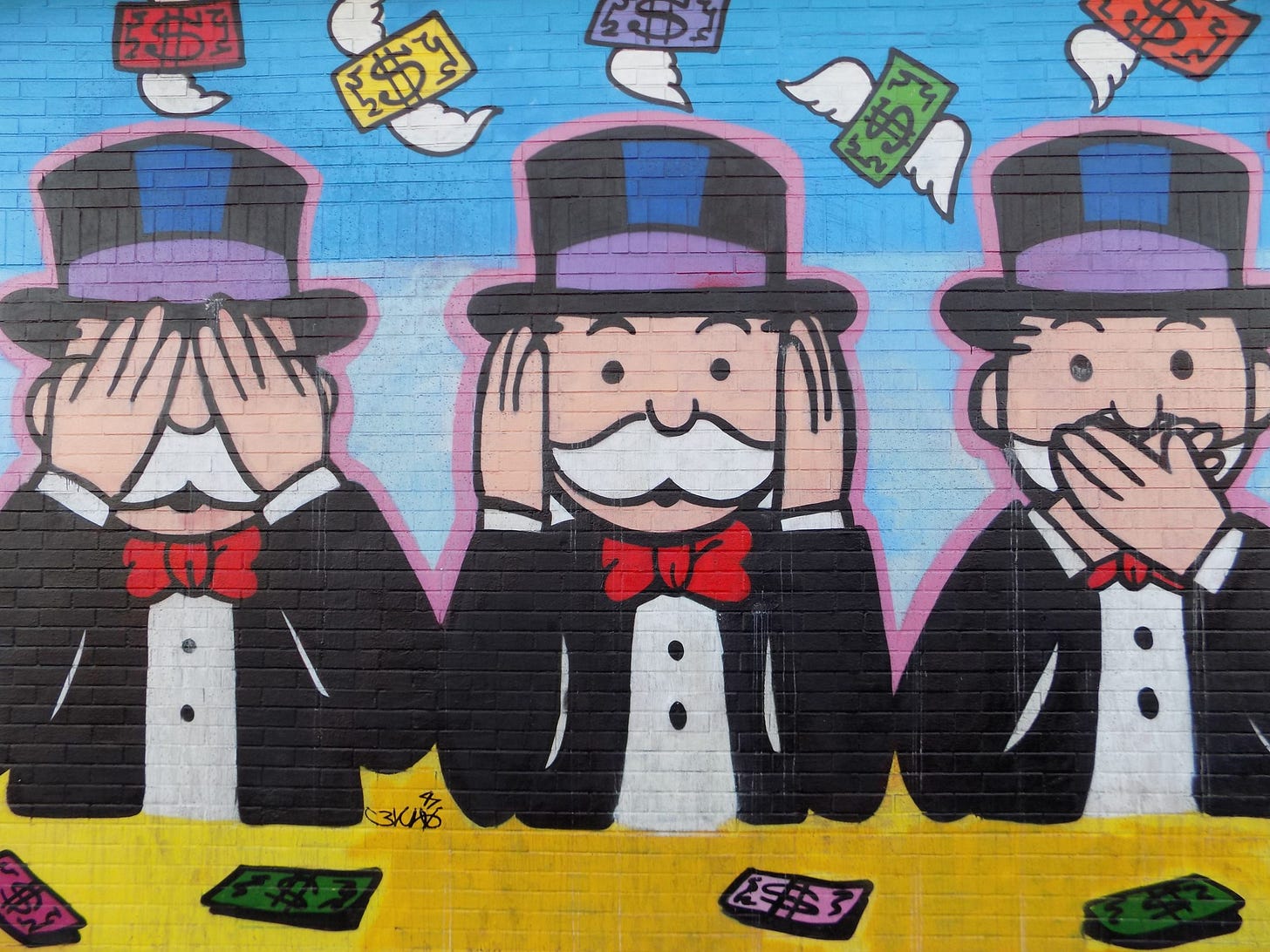
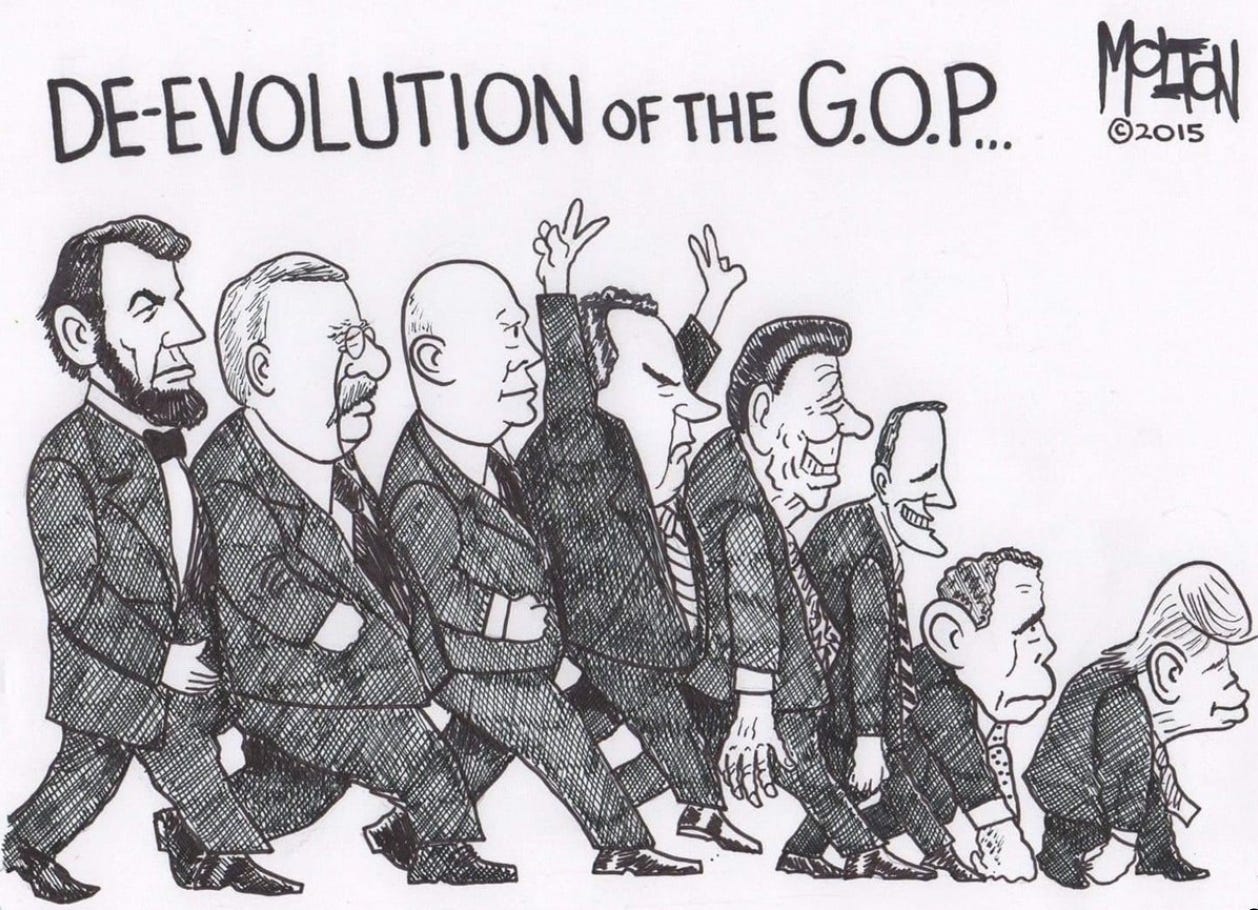
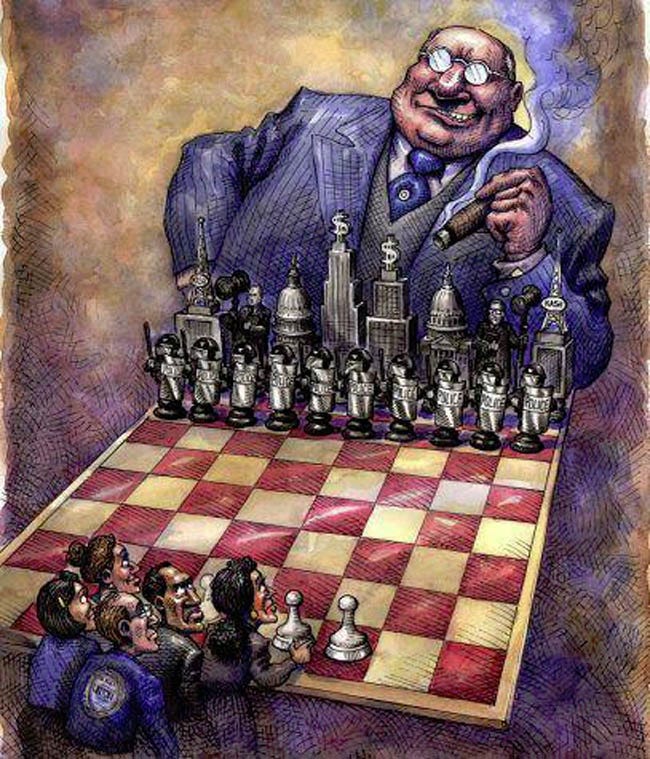

I will add that the “u-turn” affected American healthcare which became almost solely about making money rather than healing people and preventing sickness.
It also affected the health and wellbeing of average citizens because the quality of food declined significantly. People were working harder for less money and longer hours and went from affording healthy food and eating home-cooked meals to less expensive & faster processed foods & fast food from restaurants, both of which are designed in a laboratory for the purpose of making rich people richer and not the health of the people consuming the food.
I will also add that section 4 of this Substack Post is one of the biggest reasons next to mis/disinformation tactics and misogyny & sexism which cost Hillary Clinton a significant number of votes, as many people feared another Financial Center made catastrophe due to deregulation and more decline due to corporation power over people.
The 2016 election choices seemed to many as two bad choices and didn’t see much difference between either candidate - in terms of positive change for people over corporations. People who had a better grasp of Trump’s history and his character knew he was the worst choice and voted for Hillary Clinton as the lesser of two evils.
While there is no denying that Democratic Party helped continue Republican Party efforts to favor the wealthy and their industries, at least the crisis with losing American Democracy has helped wake up people like Joe Biden. Joe Biden was as Centrist as they get until he and some other Democrats and non-Trumpist Republicans finally saw how necessary it was to redistribute the wealth and power towards the New Deal heyday direction in order to prevent America from becoming like Russia with its oligarchy and its ultra-passive, hopeless, citizenry.
I’m not saying he’s perfect, but despite never having an adequate majority in Congress and with the power Corporations have over government, he really has helped started turning America around for the better for the people.
I think your summary is accurate, but you left out the role of the Supreme court. The Citizens United decision was a huge blow to representative democracy since it helped flood our elections with "dark money." The rest is history, which has mostly been downhill. Have we reached the point of no return?